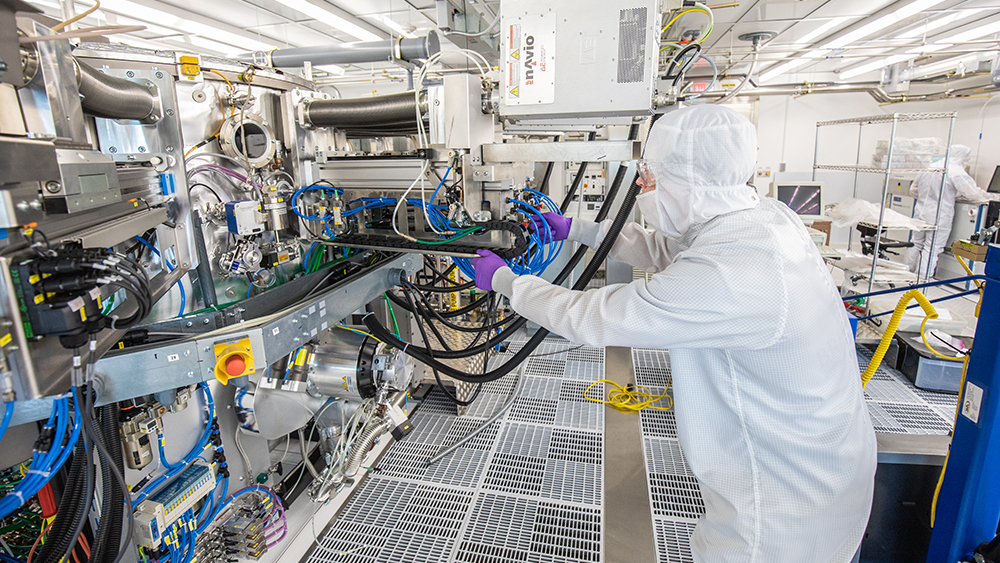
Donation will fund TEES Hewlett Packard Enterprise Center for Computer Architecture Research
The Texas A&M Engineering Experiment Station (TEES), a member of The Texas A&M University System, announced the creation of the new Hewlett Packard Enterprise Center for Computer Architecture Research, made possible with a donation from Hewlett Packard Enterprise. R. Stanley Williams, former HPE Senior Fellow and nanotechnology pioneer, will lead the TEES HPE Center, as well as serve as the Hewlett Packard Enterprise Chair Professor in the Department of Electrical and Computer Engineering at Texas A&M University.
The ongoing rise of big data and the development of powerful analytical techniques that can efficiently evaluate the data will dramatically transform the way we live and work. Unlocking the value of this data will require computer architectures that are flexible and not bound by traditional designs.
The center’s mission is to lead the way into this new world of data-driven computing architectures through academic-industry collaboration.
HPE donated research equipment valued at $10.5 million. HPE also funded a $1 million endowed chair position that Texas A&M will match with a $500,000 contribution. These gifts will establish a leading-edge research capability and partnership with TEES dedicated to the study of advanced materials and photonics for innovative computer architectures.
“This is an extremely significant gift of equipment and the hiring of Stan Williams places us at the forefront of next generation discovery in computation, nonlinear dynamical electronics and materials,” said Texas A&M University System Chancellor John Sharp. “There is no other cleanroom in the state of Texas that has all five of the high-end instruments HPE is donating, and we plan to become a regional hub for next-generation nano- and micro-engineering. We owe tremendous appreciation to HPE CTO (Chief Technology Officer) Mark Potter, whose vision for leveraging our joint assets will build a world class laboratory and attract preeminent talent in the broad area of materials.”
Initially, the center will focus on advanced materials fabrication and characterization, future electronic devices, advanced photonics and novel computer architectures. Research will aim to achieve results that both expand knowledge and motivate the next generation of computer scientists and architects for the benefit of society.
“Looking ahead, the ability to make sense of the massive amounts of data generated in academic, public and private sector settings will change not only how we do business, but also how we live,” said Potter, also Director of Hewlett Packard Labs. “Our success at evaluating the world around us and making breakthroughs we never thought possible hinges on our ability to apply technology.”
“Texas A&M University has great traditions coupled with visionary leadership,” said Williams, TEES Hewlett Packard Enterprise Center for Computer Architecture research director. “There are already world-class faculty in place who are contributing to the advancement of neuromorphic materials and new computing paradigms. The students who come here are inspired by generations of successful Aggie alumni and expect to work hard. This is the ideal environment to do something completely new in computing, untethered from legacy notions, and I am excited by the opportunities that I see.”
The center occupies 25,000 square feet of space in the Giesecke Engineering Research Building (GERB). TEES also has contributed approximately $2 million for renovations to GERB to support the new equipment and will hire three faculty in this area.
Among the equipment donated is a Clustex, used to deposit material layers on a wafer, a Titan Cubed Themis TEM Microscope, Helios SEM/FIB dual beam system, an ASM Atomic Layer Deposition tool and a NanoLab 460F1 electron microscope.
“Researchers can now develop next-generation computer chips for more powerful but energy-efficient computing, integrated photonic devices and microsensors for biosensing/medical applications or better autonomous vehicles, or flexible electronic devices and micro/nanofluidic systems for continuous health monitoring or point of care diagnosis in remote settings,” said Dr. Arum Han, director of the AggieFab Nanofabrication Facility at Texas A&M and professor in the Department of Electrical and Computer Engineering.
“It typically takes three to four years of intensive effort and institutional support to acquire even one instrument that HPE just donated,” Han said. “Having five such high-end instruments coming to our cleanroom facility simultaneously is just absolutely amazing and is unheard of for any university cleanroom.”